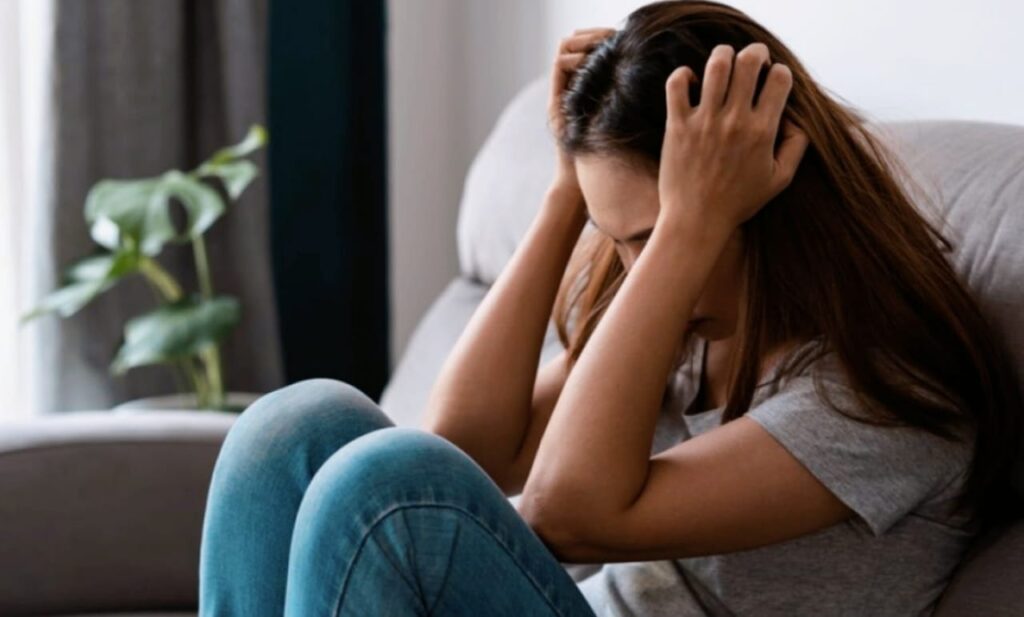
Depression is now one of the most pressing public health challenges in the United States, according to a recent CDC report. Data shows a steady rise in diagnoses over the past decade, with nearly 1 in 5 adults reporting symptoms of depression in 2023—a significant jump from 1 in 10 just ten years earlier. While the COVID-19 pandemic exacerbated feelings of isolation and anxiety, experts argue that the roots of this crisis run deeper. Economic instability, social media’s impact on self-esteem, and limited access to mental health care are fueling what some call a “silent epidemic.”
The CDC’s findings highlight that young adults aged 18–25 are disproportionately affected, with 23% experiencing moderate to severe depressive symptoms. Women report higher rates than men, though researchers emphasize that men are less likely to seek help due to stigma. Rural communities face unique hurdles, including therapist shortages and cultural barriers to discussing mental health. “Depression doesn’t discriminate, but our systems often do,” says Dr. Sarah Lin, a clinical psychologist and CDC advisor. “Many people slip through the cracks because they don’t know where to turn or can’t afford care.”
Recognizing depression early is critical, but symptoms often go unnoticed. Common signs include persistent sadness, loss of interest in hobbies, changes in appetite or sleep patterns, fatigue, and difficulty concentrating. Physical symptoms like headaches or digestive issues may also surface. For parents, shifts in a child’s behavior—such as declining grades, irritability, or social withdrawal—can be red flags. “Depression isn’t just ‘feeling down,’” explains Dr. Michael Torres, a psychiatrist specializing in adolescent mental health. “It’s a pervasive sense of hopelessness that interferes with daily life.”
The CDC report underscores that nearly 60% of adults with depression don’t receive treatment. Cost remains a major barrier, even with insurance. A 2022 survey found that 45% of Americans delayed therapy due to high out-of-pocket fees. Telehealth has improved access in urban areas, but rural clinics still struggle with funding and staffing. Community-driven solutions, like peer support groups and school-based counseling programs, are gaining traction. In Texas, for example, a nonprofit initiative trained teachers to identify mental health warning signs, leading to a 30% increase in early interventions among students.
Practical coping strategies can make a difference, even without professional help. Regular physical activity, such as a daily 20-minute walk, has been shown to reduce mild depression symptoms by up to 40%. Mindfulness practices, like deep breathing or journaling, help individuals manage negative thought patterns. Social connection is equally vital—joining a club, volunteering, or simply calling a friend can counteract isolation. “Small, consistent steps matter more than grand gestures,” says life coach Maria Gomez. “It’s about rebuilding a sense of control.”
Nutrition also plays a role. Studies link diets high in processed foods to increased depression risk, while Mediterranean-style eating—rich in vegetables, fish, and whole grains—supports brain health. Sleep hygiene, like avoiding screens before bed and maintaining a consistent schedule, improves mood regulation. For those hesitant to try medication, alternatives like cognitive-behavioral therapy (CBT) workbooks or apps like Woebot offer structured self-help tools.
Employers are increasingly addressing mental health through workplace wellness programs. Flexible hours, mental health days, and free counseling services are becoming standard in forward-thinking companies. Google’s “Blue Dot” program, which connects employees to confidential mental health resources, saw a 25% drop in stress-related leave within its first year. Still, critics argue that systemic change is needed. “Wellness programs are a start, but they can’t replace affordable, universal care,” says Dr. Lin.
The rise in depression rates reflects broader societal issues. Inflation, political polarization, and climate anxiety weigh heavily on public morale. Social media’s role is particularly contentious. While platforms provide community for some, excessive use correlates with low self-esteem—especially among teens. A 2023 Harvard study found that teens spending over 3 hours daily on social media were twice as likely to report depression symptoms. “Digital literacy should be part of school curricula,” urges Dr. Torres. “Kids need tools to navigate online spaces safely.”
Cultural attitudes are shifting, albeit slowly. Celebrities like Simone Biles and Michael Phelps sharing their mental health struggles have reduced stigma. Campaigns like Mental Health Awareness Month encourage open conversations, though marginalized groups—including LGBTQ+ individuals and people of color—still face higher risks due to discrimination. “Support needs to be intersectional,” says activist Jamal Carter. “A Black transgender man’s experience with depression isn’t the same as a white woman’s.”
Prevention remains the ultimate goal. Schools in New Jersey and California now teach emotional resilience skills, such as problem-solving and empathy, from elementary grades. Early results show promise: participating schools report fewer bullying incidents and higher student engagement. On a policy level, advocates push for expanded Medicaid coverage and mental health parity laws to ensure insurers cover therapy like physical care.
For those struggling, reaching out is the first step. Free resources—like the 988 Suicide & Crisis Lifeline or apps offering subsidized therapy—provide immediate support. Friends and family can help by listening without judgment and encouraging professional guidance. “Healing isn’t linear,” reminds Gomez. “Setbacks happen, but recovery is possible with the right tools and support.”
The CDC’s report is a wake-up call. Addressing depression’s surge requires individual and collective action—from prioritizing self-care to advocating for systemic reforms. As Dr. Lin puts it, “Mental health isn’t a luxury. It’s the foundation of everything we do.”
